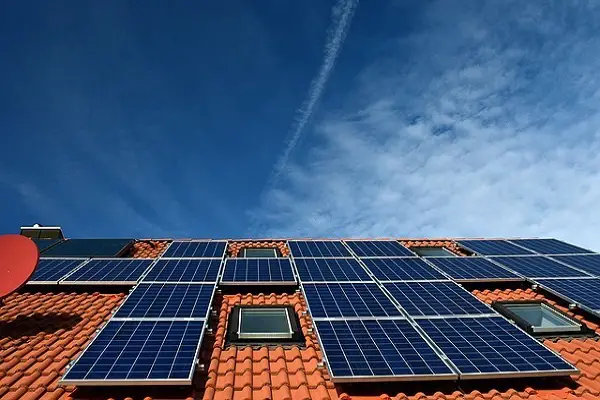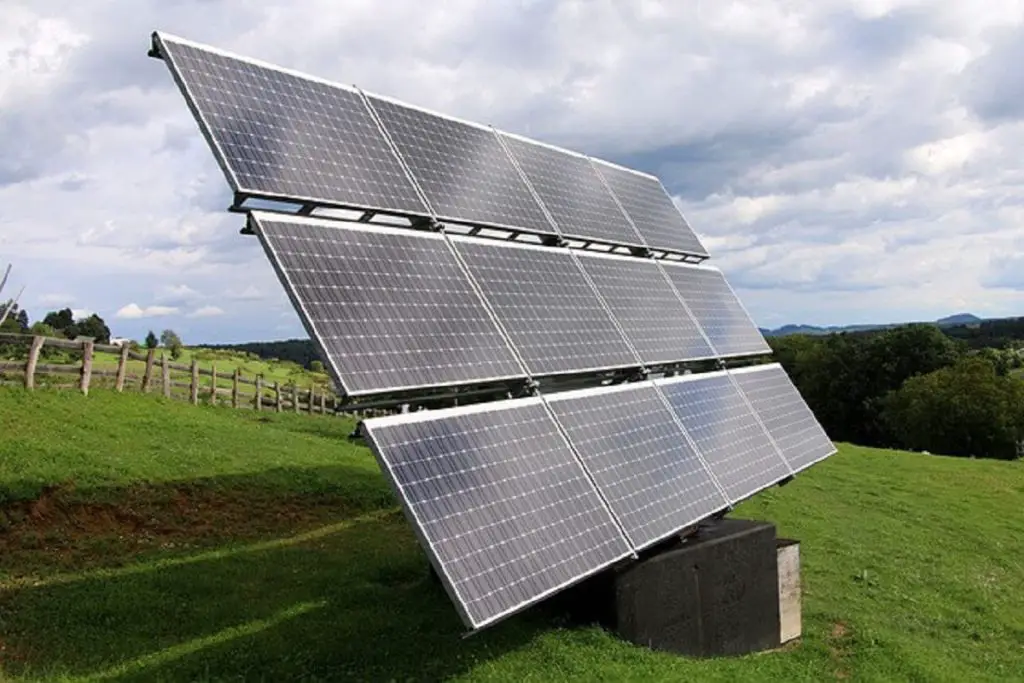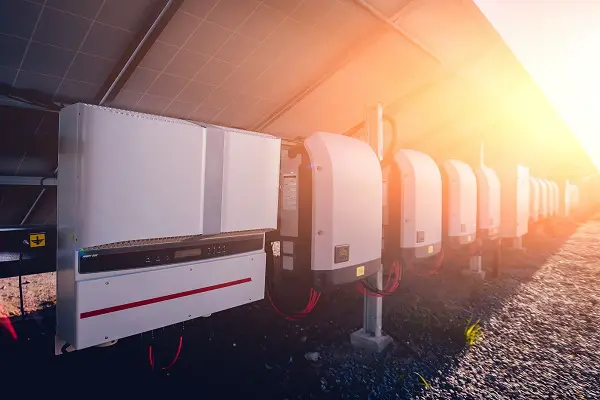How To Choose The Best Solar Battery
Reasons You Should Buy A Battery
Sometimes, you may notice that your ‘efficient’ PV system draws huge amounts of energy when compared to other days.
And it becomes more shocking when it sends the energy back to the grid. When this happens, it is because the system generates an excess of energy that the home doesn’t use at that moment.
For example, your system will store excess energy in the grid on a sunny day when you will be out of the home.
However, in the evenings, your system is not generating energy and will import energy from the grid. Hence, it is possible that your system producing more energy than is needed and doesn’t produce a enough amount of energy at other times – therein lays a discrepancy between supply and demand.
Between the months of April and November, you may find such an event to be very frustrating because the system works at a high rate to produce sufficient amount of energy to meet the energy of the home.
But with a battery, this problem may not be as bad. What a solar battery does is to store solar energy that the system generates at that moment.
By so doing, your system dispenses the energy for use when it doesn’t generate energy. So, if you already asking the question about buying a battery or not, the answer is ‘YES!’
Some buyers may also wonder about how much energy their system generates and exports which is why it is advisable to seek trusted sellers – this topic will come up in the later parts of this article. The trusted device should be able to monitor:
- Generation of energy
- Export of energy
- Overall energy consumption
8 Tips To Consider When Buying A Solar Battery
Before buying a solar battery, you must consider a few factors. Some of the key factors are highlighted thus:
Usable capacity
Usable capacity is a term that describes the storage capacity of the solar battery. In simple terms, it refers to the size of the storage of energy – the reusable energy in the home.
Nevertheless, ‘usable capacity and total capacity are two different terms that some manufacturers may mix up; do not fall for that ruse.
You must be wary of the usable capacity of your solar battery because some companies put it up as total capacity without making a distinction from both. For example, the usable capacity of the Tesla Powerwall 2 is 13.5kWh but may be sold for a total capacity of 14kWh.
Power output
Power output is supposedly the most important factor to seek when you want to purchase a solar battery. Unfortunately, some companies hide the figures as they deal in cheap battery systems.
Basically, power output connotes the periodically exported amount of energy from the solar battery. Power output and usable capacity are not similar.
If the battery were a bottle, you can say that the size that fits in the bottle is the capacity. Meanwhile, the size of the spout that quantifies the content that is ejected at a certain time represents the power output.
In a situation where you have to quench your thirst in a jiffy, a small spout may not give the sufficient amount that you need at that time.
Similarly, a lower power output of a solar batter depicts a lower probability that your solar battery will power all the appliances in the home – regardless of its capacity.
For example, a solar battery that has a maximum power output of 1000 watts is useless if you have to watch TV, boil some water in the kettle, press your clothes, or do anything with lighting.
The main purpose of the solar battery is to curb the import of energy from the grid in the first place. However, a solar battery with a very low power output will always generate energy from the grid when you have the need to use more appliances. Therefore, ensure that your solar battery’s power output is more than 3.4kW.
Lifespan
Lifespan is very tricky in solar batteries because some manufacturers parade lifespan as years warranty and others as cycle warranty. In actual terms, the cycle warranty may be overrated (except the solar battery has wheels, of course).
In solar energy systems, a complete cycle is a round of full recharge combined with complete discharge. Hence, the most warranty is offered by a solar battery that goes through 5000 cycles.
Therefore, go for solar batteries with 5000 cycles or with a minimum number of 10 years.
Chemistry of the battery
Most solar batteries are made of lithium ion or lead acid. The better choice is the lithium-ion battery. The reason is that the lithium-ion battery has a longer lifespan and delivers more power than its contemporaries through the years.
Cost of the solar battery
To determine the most suitable solar battery, you have to check out the cost of installation. When the solar battery costs a lot of money during installation, you may have to ignore its peak performance to choose better batteries according to installation and location difficulties.
Practically, you must also be sure that your location is suitable for installation of the solar battery.
Consider the following queries when checking for the solar battery with the highest efficiency in cost.
- On average, how often or how long do you stay in your home? You must certain that you will stay in your home for a certain period of tie long enough to reap the benefits of your choice.
- What is the size of your bills much after the solar battery has met its demand. Thus, how much of savings do you have left on your energy bills?
- The solar battery must offer future benefits in terms of finances and income.
- What are the costs of the choice of solar battery? Compare the answer with the three questions above.
These queries help to solve the problem of the solar battery offerings including the value – the solar batteries you should consider and shouldn’t consider.
You must put these points into cognizance as well. A cheaper battery, for example, is a false economy if it doesn’t have a long lifespan. According to a general consensus, you get a return in value for the best choice of solar battery.
Solar batteries that are more expensive have flexible installation methods and have better value as well. Your solar battery is supposed to be a long-term investment, so you must do it right and get it right.
Power cuts
When the lights go out or in the event of a power cut, solar batteries power up the house immediately. Does your solar battery act accordingly? Moreover, the power cuts are an optional extra for solar batteries. If this is important to you, make sure you select the most appropriate.
Grid charging
Buying in cheaper electricity is a futuristic feature. Some solar batteries are capable of buying in energy overnight (when it is cheaper) with charging from the solar PV system.
Instead of buying electricity from the grid at an expensive rate, you may use the energy at a later time. However, a few solar batteries are capable of this benefit.
It is at this point that a larger battery with a grid charging enabled software comes in handy because it proves useful during winter.
Grid services
When energy demand is on the high, there is a strain on the grid at periodic time intervals. A perfect example is at half-time through a cricket match when everyone gets up to use one appliance or the other.
The grid may pay domestic battery owners, through a service provider in order to access excess energy in the battery in cases when there is an increase in demand.
However, this is a futuristic feat. Thus, you may miss out on this potential source of income if your battery is not enabled. Homeowners with a small solar battery capacity may also lose out of the potential benefits of this feature.
The Right Time To Purchase A Battery
Most people are faced with the problem of knowing the right time to purchase a solar battery.
Over a couple of years, the solar battery market continues to boom with increased demands and purchases. Since the emergence of competitive products, the prices of solar batteries have reduced.
At the moment, there are several options that are available for users and the smart ones have taken advantage of the benefits.
However, the time is right when the solar battery is affordable. But you must go for the best because solar batteries are long-term investments.
You will save a lot in days like these when the prices of energy are seemingly on the increase. On the other hand, if you must seek a loan or stretch your budget in buying the solar battery, hang in there and save some more.
If you are lucky, the prices may reduce. A solar battery is as much an investment as it is a lifestyle choice. The people who sell the best solar batteries are quick to show you their energy monitoring and bills.
According to prediction, most PV systems will be sold with batteries in another 5 years. More so, different types of storage technology will come will also be in circulation. The transition to this mindset is doubling over the years as the rates of energy gradually increase.
So, why buy energy if you produce enough energy on your roof so you don’t have to buy energy.
Once you want to get your solar battery, you must get someone to install it. You must search for an accredited and reputable solar battery installer.
Before then, confirm their track record of success in installing solar batteries for previous clients. Reputable solar battery installers always have a long list of happy customers that they can refer you to. More so, the internet is always a good place to start.
Finding Out The Amount Of Energy Independence You Really Want
Your goals and budget will determine the capacity of storage that is suitable for your home. You will discover that most homes prioritize energy interdependence and savings. To determine your goals for battery storage, be certain about energy independence.
The following list is the most popular use of energy storage. The list is sorted from the lowest level of energy independence to the greatest degree.
Energy storage as an emergency backup – In case there is a short power outage, you should install a small energy storage system.
Reduced grid reliance during peak times – To reduce your grid reliance during peak time usage, install enough energy storage to cover for such periods.
Peak time independence – When grid electricity is at peak cost, install a system whose size is sufficient to cover the electricity usage.
However, it is advisable to reduce grid reliance during shoulder and peak times in order to pay less for electricity. But this is only possible when you have a TOU (time-of-use) billing agreement with the electricity retailer.
More so, some homes may consume more electricity than others in winter months especially homes with electric heating.
Summertime independence (reliance on the grid in winter) – Installing solar battery with enough storage capacity is of high importance. It is because of the need to make up for the average day of summer. You will have to draw power from the grid in case of deficits during winter, autumn, or spring.
High independence (summertime surplus, winter self-support) – So that you don’t have to depend on the electricity grid, you must install enough solar battery storage although you are still connected.
During summer, you will have enough energy to lead you through winter because the solar setup produces excess solar power in such periods. The grid is mostly best to fall back on in cases of a several days of bad weather when your solar battery bank is empty.
100% energy independence (off-grid) – To meet all your electricity needs, install enough solar and energy storage with additional technology such as a generator, small-scale wind, and much more. This particular case requires that you have enough capacity that can power up the home for some days.
This case is mostly a popular aspiration. However, taking a business or the home off-grid may cause a strain on finances especially when the panels outnumber the roof space.
Factors To Consider When Sizing The Energy Storage System
Because of the number of variables, selecting the right size of the solar PV system is less subjective and complicated than choosing the right system capacity for your energy storage. Some of the factors to consider are:
The amount of electricity the home consumes
At 20kWh/day, the consumption of electricity is relatively low. Thus, the installation of a solar battery is easy and affordable. But any figure higher than that requires intense use of energy.
So, the outlay of the specific system that will match the home’s energy need will be substantial. To solve this problem, you must either consider the reduction of energy independence or reduce the consumption of electricity.
The size of the PV system
The size of your solar PV system depends on your needs. In a case where you want to retrofit energy storage on preexisting solar systems, the size of the solar PV system may be affected.
For instance, you should get a larger storage capacity if you export a high amount of energy to the grid at very low rates. But if you plan to install a new solar system, your finances must weigh in so that you choose the system that produces sufficient electricity to meet the home requirements during daytime and reserve a smaller storage system that can capture excess energy for grid export.
However, if your goal is to have energy independence, you should oversize the system. An optional move is to install a battery bank.
The orientation of the solar or roof panels
During peak and shoulder times, the direction or orientation of the solar panels will determine the efficiency of the system. For instance, west-facing panels generate less power than north-facing solar panels.
But the west-facing array is always at its peak in meeting the energy demand of the home. But if all you have available in the south-facing roof, you can make use of that option too.
Although there are several options for solar batteries on the market, making a decision out of the myriads of options available can be tasking.
There are a number of market leaders in the solar battery business where you can find reputable merchandise. Therefore, take your time to conduct enough research before selecting a particular brand today!
P.S. If you find this post useful and interesting, please do not hesitate to share it.
If you have something to add- Leave a comment below!



